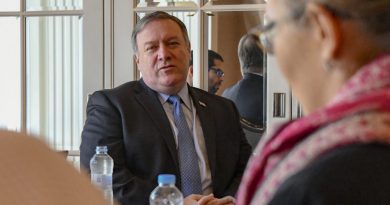The 2019 Climate March: The Social Issue that Captured the Hearts and Minds of the Youngest Global Citizens
Judy Koren
Staff Writer
On Friday, September 20, millions of kids, teenagers, and young adults from all around the world marched through the streets under the same cause: to protest the inaction from world leaders to act against climate change. From Los Angeles to Sydney, Australia, from the Pacific Islands to New York City—there was global unity for urgent climate action as 150 countries participated in the climate march, said CBS News.
The fight was inspired and led by Greta Thunberg—a 16-year-old climate activist from Sweden who was recently nominated for the Nobel Peace Prize due to her continuing fight for climate justice and equity. CBS News reports that Greta marched alongside an estimated 250,000 in New York City on Friday ahead of her delivering an address at the annual United Nations General Assembly and The Climate Action Summit. In fact, The New York Times reports that “demonstrators as young as 9” welcomed Greta when she arrived via an emissions-free sailboat in the New York Harbor.
The march was widely recognized by major cities across the United States, as multiple school districts debated whether to excuse school absences. According to The New York Times, Mayor of New York City, Bill De Blasio, excused the absences of 1.1 million public students. Will Mantell, a spokesman of the Education Department, encouraged schools to hold discussions “about the impact of climate change and the importance of civic engagement.” This is not the first time De Blasio excused the absences of students to protest; the Mayor did so in 2018 for March For Our Lives regarding gun control.
One student who attended the march was Parker LaCourse, a 21-year-old senior at Seton Hall University’s School of Diplomacy and International Relations. After interning at the UN Foundation as the Public Affairs Intern in the spring, and UNA-USA as the Youth Engagement Intern in the summer, LaCourse became involved in the march through his UNF internship where he was requested to provide social coverage of the demonstrations.
At Friday’s strike, LaCourse was “in awe of the students’ determination and how they channeled their frustrations into this movement.” In addition, LaCourse said that, although there were an overwhelming amount of high school and elementary students, the older generations “are starting to join in and throw their weight behind the issue.” In response to the volume of young protesters, LaCourse stated that they “have clearer minds… and they understand how grave of an issue the climate crisis presents.”
Chase Cohen, a 17-year-old climate activist and Diplomacy and International Relations student at Seton Hall University, attended Friday’s climate march marking her second protest this year. Inspired by the work of Greta, Chase was “proud” that primarily high school students protested “together to make a difference.” When asked why she thinks so many young people are involved, Chase credited social media, “it allows us to connect with others and creates awareness for problems around the world,” and exposes people to a broad spectrum of new ideas.
Chase highlighted that the science around the climate crisis is being ignored; “we are the ones who are going to be alive to feel the effects of climate change,” so now is the time we must demand meaningful action. In addition, Chase emphasized that “we have to be the change,” and while global leaders can call the young activists inspiring, “to truly support us they have to actually make a change.”
One NGO supportive of climate action and the youth march is The Tinker Institute on International Law and Organizations, whose mission is “research, teaching, and training about international law, sustainable development, and the United Nations System, offering assistance in compliance with international law.” UN Sustainable Development Goal (SDG) 16—peace, justice, and strong institutions—is one of five SDG’s that are of importance to the Institute, in addition to SDG 5 on gender equality, SDG 6 on freshwater and sanitation, SDG 13 on climate change and SDG 14 on oceans.
Dr. Catherine Tinker, President and Founder of The Tinker Institute on International Law and Organizations, was asked whether she believes that the astounding participation of young people will significantly prompt a higher level of implementation for transparency and good-governance from world leaders who, arguably, can no longer ignore the increasing demand for climate justice. In response, Dr. Tinker wrote that she finds it to be “no surprise” that “together with many older persons who agree with the demonstrators,” young people are actively seeking “broad participation in governance and demand accountability of those in power today.”
In fact, Dr. Tinker expressed that young people marching against climate change do influence world leaders. She trains interns each semester to attend U.N. meetings and contribute their ideas. Dr. Tinker added that the youth “are the next generation of voters, consumers, innovators, investors, and decision-makers,” so a factor right now is whether the “politicians and business leaders will act in time for today’s youth to save future generations and a healthy planet.”
Fondly, Dr. Tinker recalled one slogan from Friday’s youth-led march: “You had a future. We want one too!”



